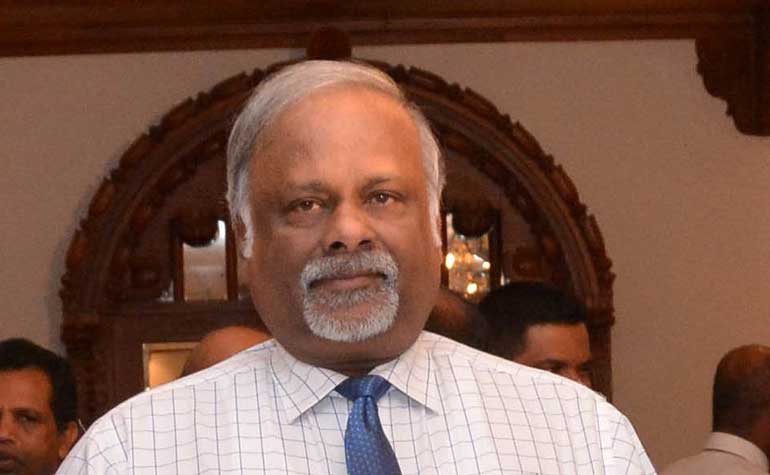Wednesday Jan 14, 2026
Wednesday Jan 14, 2026
Monday, 7 December 2015 00:00 - - {{hitsCtrl.values.hits}}

Rohaan J. Abeywickrema
“Supply Chain Industry is going through a paradigm change due to the changes taking place – mainly due to the transformation from B to B deliveries into B to C deliveries. This paradigm change has resulted in major innovations in artificial intelligence, enterprise applications, cloud computing and mobile security, among others,” said Rohaan J. Abeywickrema, delivering a paper on the title, ‘Sri Lankan Logistics and Transport sector taking the country towards the vision of a regional hub in Supply Chains’ at a seminar on ‘Developing effective transport and logistics strategies to propel Sri Lanka towards and accelerated export’ organised by the Ceylon Chamber of Commerce recently.
“41% of the total supply chain, cost savings come from optimising supply chain structure which is becoming complex everyday with segments such as Inventory optimisation, Visibility and track and trace control, Just In Time (JIT) management, Transport and warehouse management systems, among many others,” he continued.
“The challengers faced by supply chain companies today include growth in omni-channel retailing, reductions in order lead times, smaller and more frequent orders in addition to the environmental and recruitment pressures. Consumerism and the growth of the internet will put greater pressure on manufactures and their supply chain concepts such as fully automated warehouses, carbon-neutral buildings, hi-brid trucks, robotics, voice operations and optically guided pickings which are all in their various stages of development,” Abeywickrema further said.
“Online buying is another paradigm change in logistic management. China’s direct to consumer e-commerce sales grew 42% in 2013 to $ 305.5 billion and the forecast for 2020 exceeds US dollars 620 billion. The express delivery service providers delivered 9 billion pieces up 6.6% year on year. Hong Kong based Strawberry Cosmetics offered a range of 30,000 products from 700 different brands from their main distribution base in Hong Kong,” stressed Abeywickrema
“The other challenge faced by the Supply Chain Industry is 3D printing which is already very good at producing products which preciously would have required the assembly of multiple components and by eliminating this phase, there will be huge savings. A required item can be printed at home provided a scanned image or a blueprint is available. A small 3D printing machine can operate in remote locations or from even an engineer’s van.”
“Characteristics of the 2016 supply chain will be based on multi-partner information sharing among consumers (the originators of demand, either from home or from a store), suppliers, manufacturers, logistics service providers and retailers. This requires real-time access to Supply Chain visibility,” he said.
“Trade and Logistics is the largest of Hong Kong’s four major economic pillars – generating 26% of Hong Kong’s GDP and is responsible for 22% of total employment while In Singapore, services are the biggest sector of the economy and account for 72& of GDP and transport and storage share is 10%.”
“It is interesting that the National Port and Shipping Policy of Sri Lanka prepared in 2004 paid attention to the development of Sri Lanka as a logistic hub and stated that ‘government shall provide all necessary legislative and regulatory flexibility to facilitate and promote logistics and global distribution activity in Sri Lanka’ and retorted that the ‘government will treat this industry as a pioneer industry and provide all tax and other fiscal incentive to the private sector to invest in the industry’.
“11 years after, Sri Lanka has not done anything in this direction and both the government as well as the industry put these policies into Cold storage. What is interesting is that the policy formulation process identified the needs well in advance. But there was nobody interested to follow up the implementation, even in the industry,” he continued.
“The same policy document had the following policy with respect to e-commerce,” he said and he quoted the policy document: “Global business process is rapidly changing with new features like Just-in-time, zero inventories, locate-to-order and built-to-order. Most of these processes use internet related technologies that have opened new forms of communications, reduced the cost of many kinds of market interactions and brought manufactures and consumers around the globe closer.”
“In order to be competitive, Sri Lanka needs to be enabled to meet these challenges as, in an increasingly global market, buyers can choose suppliers from those regions and countries that specialise, have all the required facilities and where the factor costs are the lowest,” the Policy document further stated.
“ It is unfortunate that trade associations which chose to call a technology brought up 15 years ago ‘State of the Art’ and even the Chambers chose to fail the industry,” lamented Abeywickrema and asked, “How can Sri Lanka provide real-time access to Supply Chain visibility without the even the most basic e-commerce facilities?”
“At the Strategic Enterprise Management Agency (SEMA), we developed the concept of integrated logistics centres in 2007 and even suitable locations were identified at Veyangoda and Ratmalana. Surprisingly we were able to identify all most all of today’s concepts as well as needs and proposed creating facilities to accommodate those concepts, including those mentioned earlier and others like Just in time, zero inventories, locate to order and bill to order, on-line ordering and direct-to-consumer e-commerce sales.”
“The Silver Lining was the ability for some who worked with policy formulation in the state sector to see the future in the right perspective but the dark line is that the state policy makers and the industry allowed these innovative visions and the documents to gather dust,” he said and concluded by saying that “Sri Lanka can only become a regional Supply Chain hub if the industry champions & the state policy makers choose to change gear.”